-
 Bitcoin
Bitcoin $83,309.8774
-1.88% -
 Ethereum
Ethereum $1,591.3660
-2.42% -
 Tether USDt
Tether USDt $0.9998
-0.01% -
 XRP
XRP $2.0864
-2.28% -
 BNB
BNB $580.9809
-0.68% -
 Solana
Solana $125.6682
-3.01% -
 USDC
USDC $0.9999
0.00% -
 TRON
TRON $0.2516
0.03% -
 Dogecoin
Dogecoin $0.1542
-3.08% -
 Cardano
Cardano $0.6142
-3.69% -
 UNUS SED LEO
UNUS SED LEO $9.3431
-0.92% -
 Chainlink
Chainlink $12.3641
-2.37% -
 Avalanche
Avalanche $18.8865
-5.31% -
 Stellar
Stellar $0.2358
-2.40% -
 Toncoin
Toncoin $2.8805
-0.91% -
 Shiba Inu
Shiba Inu $0.0...01169
-1.89% -
 Sui
Sui $2.1008
-4.00% -
 Hedera
Hedera $0.1574
-5.48% -
 Bitcoin Cash
Bitcoin Cash $318.9019
-1.04% -
 Litecoin
Litecoin $75.9077
-2.52% -
 Polkadot
Polkadot $3.5432
-3.69% -
 Dai
Dai $1.0000
0.00% -
 Bitget Token
Bitget Token $4.2538
-1.47% -
 Hyperliquid
Hyperliquid $15.1227
-5.40% -
 Ethena USDe
Ethena USDe $0.9991
0.00% -
 Pi
Pi $0.6199
-16.77% -
 Monero
Monero $217.3319
2.19% -
 Uniswap
Uniswap $5.2227
-2.58% -
 OKB
OKB $52.2436
1.28% -
 Pepe
Pepe $0.0...07082
-3.62%
How much does electricity cost affect mining revenue?
Electricity costs significantly impact crypto mining revenue; miners in low-cost regions like Iceland profit more than those in high-cost areas like Germany.
Apr 08, 2025 at 05:29 pm
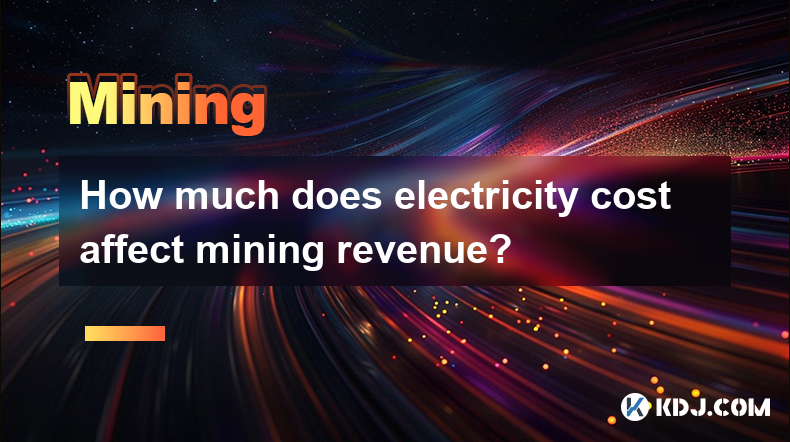
The cost of electricity plays a crucial role in determining the profitability of cryptocurrency mining. Mining revenue is directly impacted by the expenses incurred in running mining equipment, with electricity costs often being the most significant operational expense. Understanding how electricity costs affect mining revenue is essential for miners looking to maximize their profits.
The Basics of Mining and Electricity Costs
Cryptocurrency mining involves using specialized hardware to solve complex mathematical problems, which in turn validates transactions and adds them to the blockchain. This process requires a significant amount of computational power, and consequently, a substantial amount of electricity. The cost of electricity can vary widely depending on the location and the energy provider, making it a critical factor in the overall cost of mining.
Calculating the Impact of Electricity Costs on Mining Revenue
To understand how electricity costs affect mining revenue, miners need to calculate their net profit. This involves subtracting the total costs, including electricity, from the revenue generated from mining. The formula for net profit can be expressed as:
[ \text{Net Profit} = \text{Revenue from Mining} - \text{Total Costs} ]
Where total costs include electricity, hardware depreciation, and other operational expenses. The revenue from mining is determined by the amount of cryptocurrency mined and its current market value.
The Role of Electricity Rates
Electricity rates are a pivotal factor in the profitability of mining operations. Miners in regions with lower electricity costs have a competitive advantage over those in areas with higher rates. For instance, miners in countries like Iceland or Canada, where electricity is relatively cheap, can achieve higher net profits compared to miners in regions like Germany or Japan, where electricity costs are higher.
Strategies to Mitigate Electricity Costs
Miners employ various strategies to mitigate the impact of electricity costs on their revenue. Some of these strategies include:
- Choosing the right location: Miners often set up operations in regions with low electricity costs to maximize their profits.
- Using energy-efficient hardware: Investing in more efficient mining rigs can reduce electricity consumption and lower overall costs.
- Participating in energy markets: Some miners take advantage of off-peak electricity rates or participate in energy markets to reduce their costs.
- Renewable energy sources: Utilizing renewable energy sources like solar or wind power can significantly reduce electricity expenses and enhance sustainability.
Case Study: Bitcoin Mining and Electricity Costs
To illustrate the impact of electricity costs on mining revenue, let's consider a case study involving Bitcoin mining. Suppose a miner operates a mining rig that consumes 1,500 watts of power and runs 24/7. The miner's electricity cost is $0.10 per kilowatt-hour (kWh).
- Daily electricity consumption: 1,500 watts x 24 hours = 36 kWh
- Daily electricity cost: 36 kWh x $0.10/kWh = $3.60
If the miner earns 0.0005 BTC per day and the current price of Bitcoin is $30,000, the daily revenue would be:
- Daily revenue: 0.0005 BTC x $30,000/BTC = $15
The daily net profit would then be:
- Daily net profit: $15 - $3.60 = $11.40
In this scenario, the electricity cost represents a significant portion of the total costs, highlighting its impact on the miner's revenue.
The Importance of Monitoring and Adjusting
Monitoring and adjusting mining operations based on electricity costs is crucial for maintaining profitability. Miners need to keep a close eye on their electricity expenses and adjust their strategies accordingly. This might involve switching to more energy-efficient hardware, relocating to a region with lower electricity rates, or optimizing their mining schedule to take advantage of off-peak rates.
Electricity Costs and Mining Difficulty
Another factor to consider is the relationship between electricity costs and mining difficulty. As more miners join the network, the difficulty of mining increases, which can reduce the amount of cryptocurrency mined per unit of electricity consumed. Mining difficulty adjustments can further impact the profitability of mining operations, making it essential for miners to stay informed about changes in the network's difficulty level.
The Impact of Cryptocurrency Prices
The price of the cryptocurrency being mined also plays a significant role in determining the impact of electricity costs on mining revenue. When cryptocurrency prices are high, miners can afford to pay more for electricity and still maintain profitability. Conversely, when prices are low, high electricity costs can quickly erode profits, making it challenging for miners to break even.
Real-World Examples of Electricity Costs Affecting Mining Revenue
Several real-world examples illustrate how electricity costs can affect mining revenue. For instance, in 2018, many Bitcoin miners in China faced significant challenges due to rising electricity costs and increased mining difficulty. Some miners were forced to shut down their operations or relocate to regions with lower electricity rates to remain profitable.
Similarly, in 2020, the cryptocurrency mining industry in Iran faced a crackdown due to the high electricity consumption of mining operations. The Iranian government imposed restrictions on mining activities, citing the strain on the national power grid. This example highlights how electricity costs and regulatory measures can impact mining revenue.
Frequently Asked Questions
Q: How can miners find the best locations for mining based on electricity costs?
A: Miners can research electricity rates in different regions and countries to identify areas with the lowest costs. Websites like GlobalPetrolPrices.com provide data on electricity prices worldwide. Additionally, miners can join online forums and communities to gather insights from other miners about the best locations for setting up mining operations.
Q: Are there any tools available to help miners calculate the impact of electricity costs on their revenue?
A: Yes, several online tools and calculators are available to help miners estimate their mining revenue and costs. For example, the WhatToMine calculator allows miners to input their electricity costs, hardware specifications, and cryptocurrency prices to estimate their potential profits.
Q: How do changes in electricity costs affect the decision to invest in new mining hardware?
A: Changes in electricity costs can significantly impact the decision to invest in new mining hardware. If electricity costs rise, miners may need to invest in more energy-efficient hardware to maintain profitability. Conversely, if electricity costs decrease, miners might be more inclined to invest in additional hardware to increase their mining capacity.
Q: Can miners use renewable energy sources to reduce their electricity costs?
A: Yes, miners can use renewable energy sources like solar, wind, or hydroelectric power to reduce their electricity costs. By setting up mining operations in areas with abundant renewable energy resources, miners can lower their operational expenses and enhance the sustainability of their operations.
Disclaimer:info@kdj.com
The information provided is not trading advice. kdj.com does not assume any responsibility for any investments made based on the information provided in this article. Cryptocurrencies are highly volatile and it is highly recommended that you invest with caution after thorough research!
If you believe that the content used on this website infringes your copyright, please contact us immediately (info@kdj.com) and we will delete it promptly.
- Movement Labs and the Movement Network Foundation have launched an independent investigation into recent market-making irregularities related to the MOVE token.
- 2025-04-16 09:15:12
- Shiba Inu (SHIB) burn rate saw an over 2000% hike, leading to the removal of 20.83 million tokens from circulation.
- 2025-04-16 09:15:12
- Securitize Acquires MG Stover's Fund Administration Business to Become the Largest Digital Asset Fund Administrator
- 2025-04-16 09:10:12
- Trump administration plans to present Congress with cuts to most funding for public media
- 2025-04-16 09:10:12
- XRP (XRP) Displays Promising Growth Potential as It Currently Trades Above $2.00 and the 21-week EMA
- 2025-04-16 09:05:13
- BYDFi Lists $KERNEL, the Governance Token of KernelDAO, with Spot Trading Now Live
- 2025-04-16 09:05:13
Related knowledge
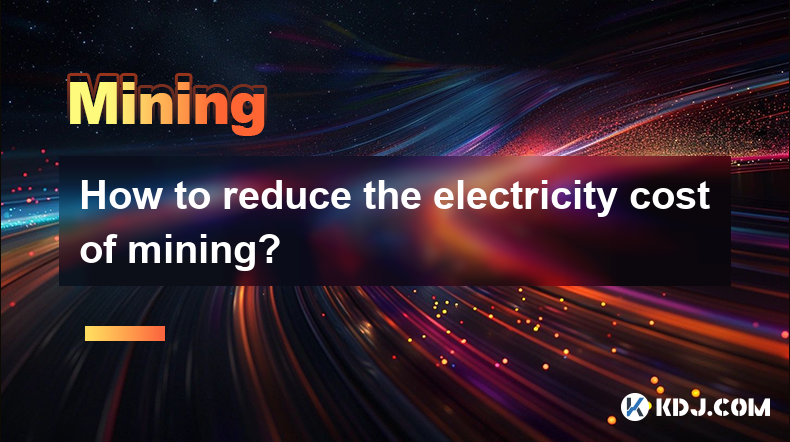
How to reduce the electricity cost of mining?
Apr 16,2025 at 08:42am
Mining cryptocurrencies, particularly Bitcoin, is an energy-intensive process that can lead to significant electricity costs. However, there are several strategies that miners can employ to reduce these expenses and make their operations more cost-effective. In this article, we will explore various methods to minimize the electricity cost of mining. Cho...
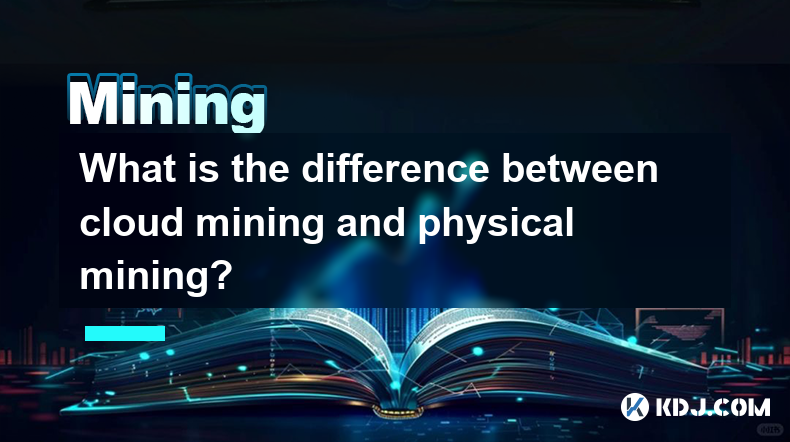
What is the difference between cloud mining and physical mining?
Apr 16,2025 at 01:49am
What is the difference between cloud mining and physical mining? In the world of cryptocurrencies, mining is the process by which new coins are generated and transactions are verified and added to the blockchain. There are two primary methods of mining: cloud mining and physical mining. Understanding the differences between these two approaches can help...
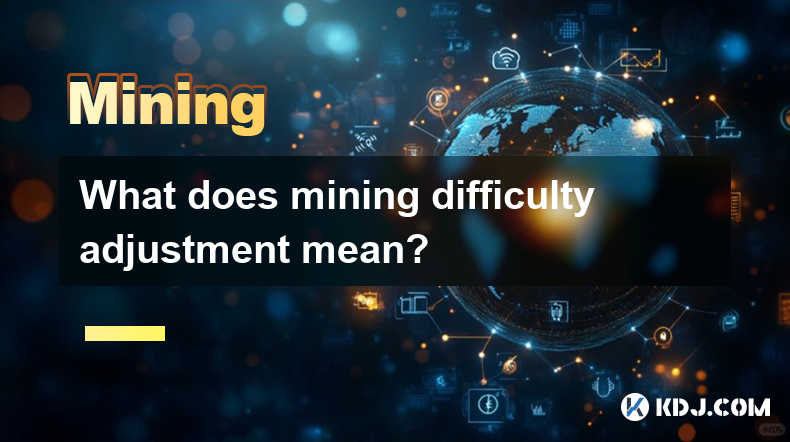
What does mining difficulty adjustment mean?
Apr 16,2025 at 12:42am
What does mining difficulty adjustment mean? Mining difficulty adjustment is a crucial mechanism in blockchain networks, particularly in Proof of Work (PoW) systems like Bitcoin. It ensures that the rate at which new blocks are added to the blockchain remains consistent, despite fluctuations in the total computational power (hash rate) of the network. T...
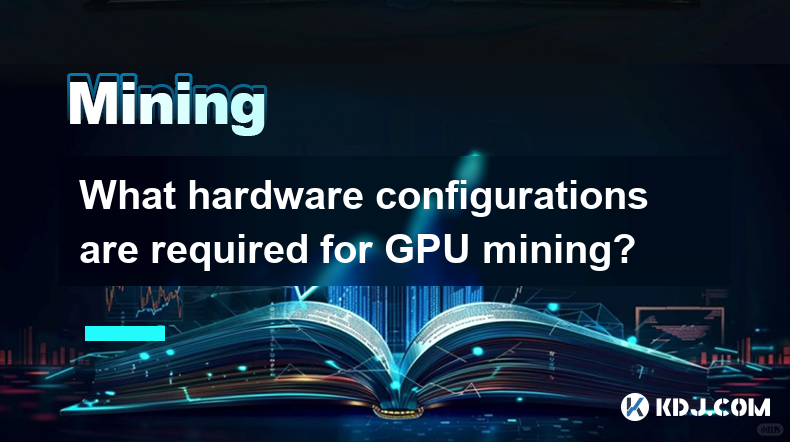
What hardware configurations are required for GPU mining?
Apr 16,2025 at 09:21am
GPU mining has become a popular method for cryptocurrency enthusiasts to mine various cryptocurrencies, such as Ethereum, Ravencoin, and others. To successfully engage in GPU mining, it is essential to understand the hardware configurations required to maximize efficiency and profitability. This article will delve into the specifics of what you need to ...
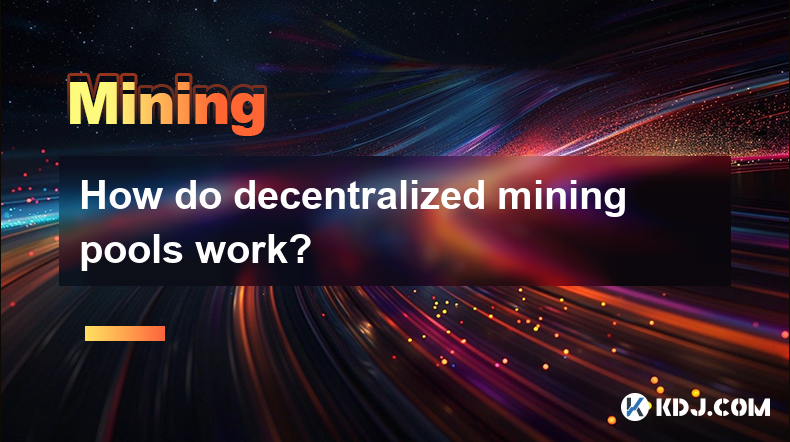
How do decentralized mining pools work?
Apr 16,2025 at 05:42am
Decentralized mining pools represent a significant evolution in the world of cryptocurrency mining, offering a more democratic and transparent approach compared to traditional centralized pools. In this article, we will explore the mechanics of decentralized mining pools, their benefits, and how they operate within the cryptocurrency ecosystem. What are...
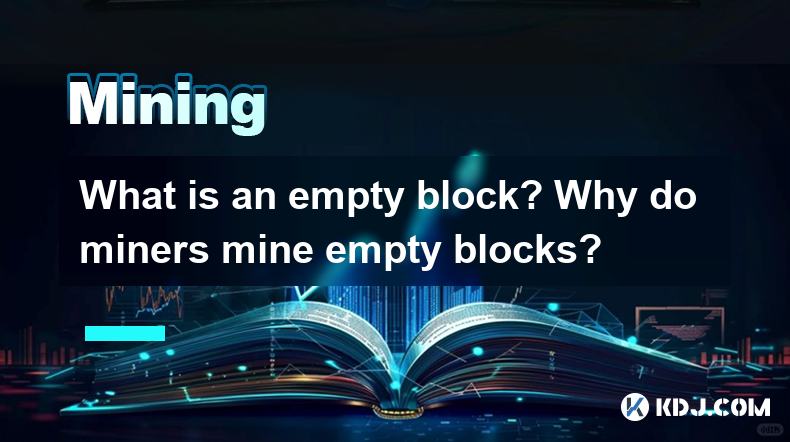
What is an empty block? Why do miners mine empty blocks?
Apr 16,2025 at 01:28am
What is an Empty Block?An empty block in the context of blockchain technology, particularly in cryptocurrencies like Bitcoin, refers to a block that contains no transactions other than the coinbase transaction. The coinbase transaction is a special transaction in which new bitcoins are generated and awarded to the miner who successfully mines the block....

How to reduce the electricity cost of mining?
Apr 16,2025 at 08:42am
Mining cryptocurrencies, particularly Bitcoin, is an energy-intensive process that can lead to significant electricity costs. However, there are several strategies that miners can employ to reduce these expenses and make their operations more cost-effective. In this article, we will explore various methods to minimize the electricity cost of mining. Cho...

What is the difference between cloud mining and physical mining?
Apr 16,2025 at 01:49am
What is the difference between cloud mining and physical mining? In the world of cryptocurrencies, mining is the process by which new coins are generated and transactions are verified and added to the blockchain. There are two primary methods of mining: cloud mining and physical mining. Understanding the differences between these two approaches can help...

What does mining difficulty adjustment mean?
Apr 16,2025 at 12:42am
What does mining difficulty adjustment mean? Mining difficulty adjustment is a crucial mechanism in blockchain networks, particularly in Proof of Work (PoW) systems like Bitcoin. It ensures that the rate at which new blocks are added to the blockchain remains consistent, despite fluctuations in the total computational power (hash rate) of the network. T...

What hardware configurations are required for GPU mining?
Apr 16,2025 at 09:21am
GPU mining has become a popular method for cryptocurrency enthusiasts to mine various cryptocurrencies, such as Ethereum, Ravencoin, and others. To successfully engage in GPU mining, it is essential to understand the hardware configurations required to maximize efficiency and profitability. This article will delve into the specifics of what you need to ...

How do decentralized mining pools work?
Apr 16,2025 at 05:42am
Decentralized mining pools represent a significant evolution in the world of cryptocurrency mining, offering a more democratic and transparent approach compared to traditional centralized pools. In this article, we will explore the mechanics of decentralized mining pools, their benefits, and how they operate within the cryptocurrency ecosystem. What are...

What is an empty block? Why do miners mine empty blocks?
Apr 16,2025 at 01:28am
What is an Empty Block?An empty block in the context of blockchain technology, particularly in cryptocurrencies like Bitcoin, refers to a block that contains no transactions other than the coinbase transaction. The coinbase transaction is a special transaction in which new bitcoins are generated and awarded to the miner who successfully mines the block....
See all articles























































































